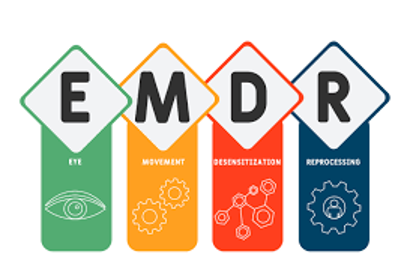What is EMDR?
Eye Movement Desensitization and Reprocessing (EMDR) is a therapy primarily for people with traumatic memories. It was developed in the 1980’s and is now one of the recommended interventions for PTSD and there are promising findings for its effectiveness for other difficulties. Unlike traditional talking therapies, EMDR does not rely solely on discussion with your therapist, but follows a structured 8 Phase approach that incorporates bilateral stimulation (usually in the form of eye movements). This stimulation helps the brain reprocess traumatic memories and ultimately reduce their emotional impact.
Who is it for?
While EMDR is most known for the treatment of PTSD, there is promising evidence for the effectiveness of anxiety, depression, and phobias. Attachment Focused EMDR can be used to address key aspects of childhood that didn’t happen (such as the provision of a warm, nurturing relationship with a caregiver) as well as traumatic events that did happen (such as fights between parents, a car accident or abuse).
What is a traumatic memory?
When we experience a trauma, the brain can be overwhelmed. This prevents the experience being processed adaptively and the experience becomes “stuck”. This can result in the traumatic memory being re-triggered over and over again in the present, resulting in significant emotional intensity. An EMDR therapist can help these memories become “unstuck”.
What are the 8 phases of EMDR?
- History Taking. During this phase, an EMDR therapist will take a history, identifying traumatic memories and setting goals for treatment.
2. Preparation. You will go through the EMDR model, understanding how traumatic memories are formed and how past events can cause strong emotions in the present. During this phase, the therapist ensures that the client has enough self-care skills to manage emotional disturbances that can arise during EMDR.
3. Assessment. This involves the identification of specific memories (“targets”) and the negative beliefs that are tied to them.
4. Desensitization. This is an important phase of EMDR. During this phase, the client engages in bilateral stimulation (such as following the therapist’s pen with their eyes) while recalling a traumatic memory. The bilateral stimulation helps the client to process the memory and reduce the emotional disturbance that has been associated with.
5. Installation. Once a traumatic memory has been desensitized, the therapist then helps the client to associate a positive belief to the event.
6. Body Scan. During EMDR, the client is tasked with scanning their body for physical sensations that can arise from the traumatic memory.
7. Closure. The therapist ensures that the client feels sufficiently grounded and present before the end of the session, using the self-care techniques introduced the Preparation phase.
8. Re-evaluation. At the beginning of subsequent sessions, the therapist will assess the progress of EMDR and determine the path to take for the current session.
If you are interested in availing of EMDR with a trained EMDR therapist, please contact Vivamus to see one of EMDR team. You can read more about EMDR at Vivamus here.
Dr Mark Corcoran, Clinical Psychologist, Vivamus
Call us (04 4403844) or drop us an email (hello@vivamus.me) if you’d like to make an appointment to see Dr. Mark Corcoran or any of our very experienced EMDR therapists at Vivamus.

